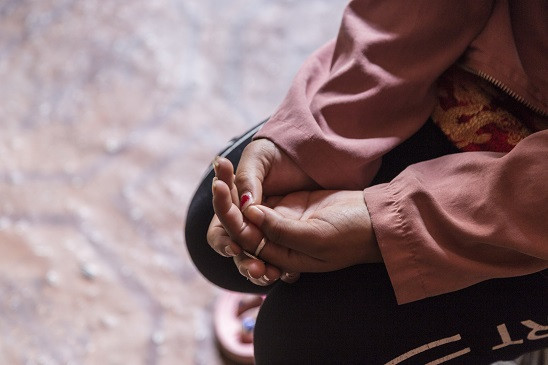"I thought that if we kept quiet, it would lead to more problems,” says 16-year-old Maya (name changed). “I felt like I should raise my voice because it would protect me, my friends and younger girls who are studying in the school.” Maya just completed grade 8 in her rural school in one of the districts badly affected by Nepal’s earthquake two years ago. One of her teachers had been hitting grade 4 girls for making mistakes on their homework. He was also seen sexually harassing older girls, making inappropriate comments and touching them.

The girls had reported this to the principal, but she was reluctant to take action against the teacher – a well-connected person in the community politically. So, the girls took matters into their own hands: they went on strike.
“We planned the protest by closing the school for a day to create pressure and make [the teacher] realize what he had done,” Maya explains. “My friends suggested closing class 8 only, but I thought that we should close the whole school for a day.” Maya explained to younger students that they needed to protest for their safety, and to show the teacher that they were serious about demanding change.
Maya had practice thinking about her rights and how to stand up to violations through a Her Turn workshop she attended at her school a few years earlier. During the workshop, she learned about the different forms violence can take, the rights girls like her have by Nepali law, and who she can turn to for help.
People in Need (PIN) and Hamro Palo, PIN’s implementing partner, deliver Her Turn workshops in rural areas of Nepal through a project currently funded with UK aid from the British people in consortium with CARE. One of the aims of the workshops is to increase adolescent girls’ confidence and resilience to violence – both skills Maya and her friends needed to draw upon.
After the workshops end, the girls form Girls Support Committees, to continue addressing these issues on their own. The Committees are supported by a mentor, a young woman from the same village who led the initial training. The striking girls said the mentor taught them not to tolerate things like physical abuse, and to report harassment.
An amazing thing happened when the boy students heard about the protest. Most of them joined in, too.
Kumar (name changed), 18, explains, “a teacher is a respected profession, but to commit such acts of violence is shameful.” Kumar says the boys knew the girls were right to stand up, and they wanted to help them in their campaign. Not all the boys supported the strike, though. Some worried if the teacher was fired, they wouldn’t be able to pass their exams.
After the protest, the School Management Committee held several meetings with the school’s principal, teachers, and the Girls Support Committee. These meetings led to the teacher apologizing to the girls. A few months since the protest, the teacher has not committed further abuse, but has also not been dismissed from the school, likely due to his political connections. This shows how difficult it can be to address systemic abuse in contexts like close-knit villages where rigid social norms and hierarchies rule.
Maya’s and her friends’ school reality is unfortunately common. According to a 2014 study conducted in one of Nepal’s districts published by ICRW and PLAN International, 44% of students felt unsafe or very unsafe in their schools, with 13% of students citing harassment by teachers as a reason, and 19% attributing danger to sexual harassment by teachers. In the same study, 60% of students reported experiencing some form of physical violence in their school and 9% experienced sexual violence in the last 6 months. Students age 15-17 reported similar levels of abuse against boys and girls, but younger kids (12-14) actually reported higher rates of abuse against boys.
Maya’s and her friends’ situation illustrates the many challenges of creating a safe school environment, where teachers are sensitive to the girls’ and boys’ needs, and held accountable when they fail. It also shows how in a country like Nepal, traditional values based on hierarchy and strict discipline can make it difficult for children to access justice. Children are not expected to speak up against more senior people; when they disrupt the social hierarchy in such a way, there can be repercussions.
But Maya’s story also proves that girls can be powerful leaders and agents of change. “We were confident during the protest. We are proud of what we did,” a member of the Girl Support Committee said remembering the protest. “We took a step to protect every girl and junior sister in our school.”









